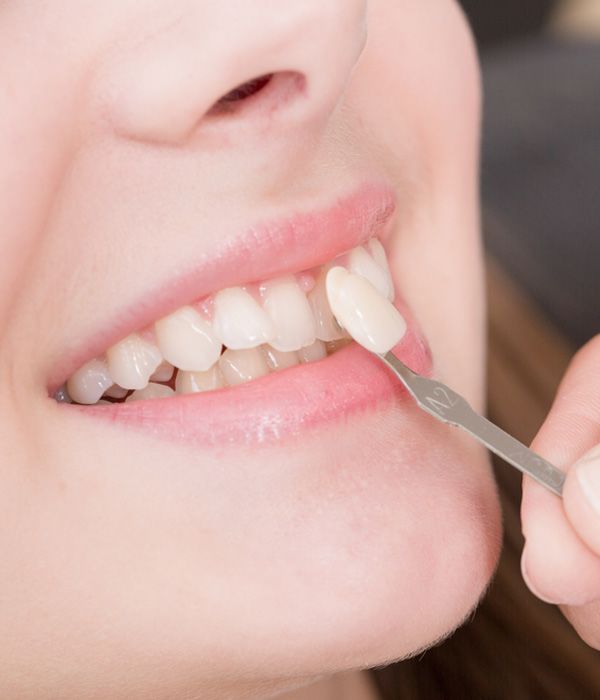One of the most common questions patients ask when considering composite veneers is whether they can be applied to crooked teeth. Composite veneers are a versatile cosmetic dental solution that can enhance the appearance of teeth by covering imperfections like chips, stains, and gaps. But when it comes to crooked teeth, many wonder if veneers can provide a solution. In most cases, the answer is yes – Composite Veneers can improve the look of crooked teeth, although the effectiveness depends on the degree of misalignment.
Understanding Composite Veneers and Their Purpose:
Composite veneers are thin, custom-made shells of tooth-colored resin applied to the front surface of teeth. They are designed to correct various dental issues, including:
-
Stains and discoloration: Composite veneers can cover teeth that are discolored due to age, genetics, or lifestyle choices like smoking or drinking coffee.
-
Chips and cracks: These veneers can smooth out chipped or cracked teeth to create a more uniform appearance.
-
Gaps between teeth: Composite veneers are ideal for closing small gaps between teeth without the need for braces.
For those with mildly crooked teeth, composite veneers can be a quick and cost-effective alternative to orthodontic treatments like braces. However, their application depends on the severity of the crookedness.
How Composite Veneers Work on Crooked Teeth?
When it comes to crooked teeth, composite veneers can be used to mask mild misalignment and improve the overall appearance of your smile. Here’s how the process works:
-
Minimal reshaping: In cases of minor crookedness, composite veneers can be applied without major reshaping of the tooth. The dentist will apply the resin to smooth out the surface and give the teeth a straighter, more even look.
-
Building up the tooth surface: If the teeth are more crooked, the dentist may need to build up the composite resin in a way that compensates for the misalignment. This allows the teeth to appear straighter and more symmetrical.
-
Custom shading: The resin can be shaded to match the natural color of the surrounding teeth, ensuring that the final result looks realistic and seamless.
While composite veneers can create the illusion of straighter teeth, they won’t actually shift the position of the teeth like orthodontic treatments would.
Limitations of Composite Veneers on Crooked Teeth:
While composite veneers are a great solution for some, they do have limitations when it comes to addressing crooked teeth. Here are some important factors to consider:
-
Mild to moderate crookedness: Composite veneers work best for mild to moderate cases of misalignment. If your teeth are severely crooked or overcrowded, veneers may not provide the best results.
-
Non-permanent solution: Unlike braces, composite veneers do not change the structure of the teeth permanently. They are a cosmetic solution that enhances the appearance, but they do not address the underlying issue of crookedness.
-
Possible need for multiple veneers: In cases where several teeth are crooked, multiple veneers may be needed to achieve a balanced and natural-looking smile. This can increase the overall cost and treatment time.
If you have severely crooked teeth, it’s essential to discuss your options with your dentist. In some cases, traditional orthodontics may be recommended for better long-term results.
Advantages of Composite Veneers for Crooked Teeth:
Despite some limitations, there are many benefits to using composite veneers for crooked teeth. These include:
-
Quick and non-invasive: Composite veneers can be applied in a single visit, making them a faster alternative to braces or other orthodontic treatments. They require minimal tooth preparation, preserving more of your natural tooth structure.
-
Cost-effective: Compared to other cosmetic dental treatments like porcelain veneers or braces, composite veneers are relatively affordable, offering a great option for those looking to improve the appearance of their smile without breaking the bank.
-
Instant results: Composite veneers provide immediate improvements in the appearance of crooked teeth, allowing you to leave the dentist’s office with a more even and aesthetically pleasing smile.
For patients with mild misalignment, composite veneers offer a fast and affordable way to achieve the desired cosmetic results.
Alternative Options for Correcting Crooked Teeth:
If you have more severely crooked teeth and composite veneers are not suitable for you, there are other treatment options available:
-
Braces: Traditional braces are the most effective method for straightening crooked teeth, although they require a longer treatment time, usually 18 months to 2 years.
-
Clear aligners: Invisalign and other clear aligner systems offer a more discreet alternative to traditional braces for correcting crooked teeth. These aligners gradually shift the teeth into their correct positions.
-
Porcelain veneers: If you prefer a more durable solution and have more severe misalignment, porcelain veneers may be an option. These are stronger and longer-lasting than composite veneers and can provide more significant cosmetic improvements.
Discussing your options with your dentist will help you determine which treatment is best for your specific needs.
Maintaining Your Composite Veneers on Crooked Teeth:
After getting Composite Veneers treatment applied to your crooked teeth, it’s important to follow proper maintenance practices to ensure they last. Here are some tips for maintaining your veneers:
-
Avoid hard foods: To prevent damage to the veneers, avoid eating hard or sticky foods that could cause them to chip or break.
-
Practice good oral hygiene: Brush your teeth at least twice a day with a non-abrasive toothpaste and floss daily to keep the veneers clean and free of plaque buildup.
-
Regular dental check-ups: Visit your dentist regularly for cleanings and check-ups to ensure your veneers remain in good condition.
Taking care of your composite veneers can extend their lifespan and help maintain the appearance of your smile.
Conclusion:
In summary, composite veneers are a great solution for people with mildly crooked teeth who want to improve the aesthetics of their smile. While they don’t correct the misalignment itself, they can create the illusion of straighter, more uniform teeth. For more severe cases, other orthodontic treatments like braces or clear aligners may be necessary. If you’re considering composite veneers, consult with your dentist to determine if they’re the right option for you.
This post was created with our nice and easy submission form. Create your post!





